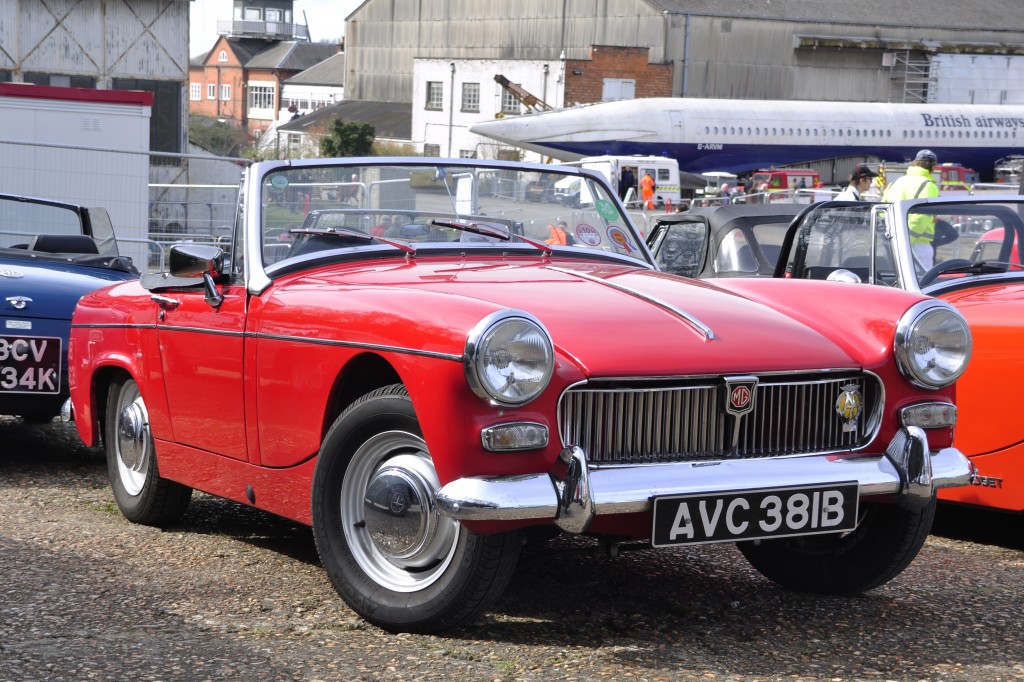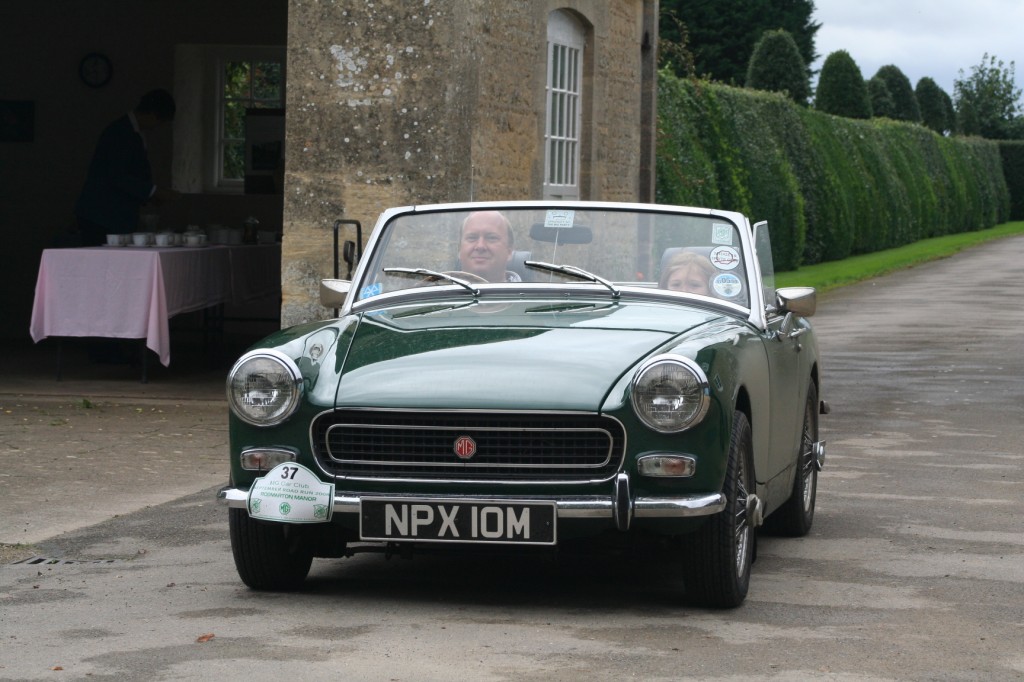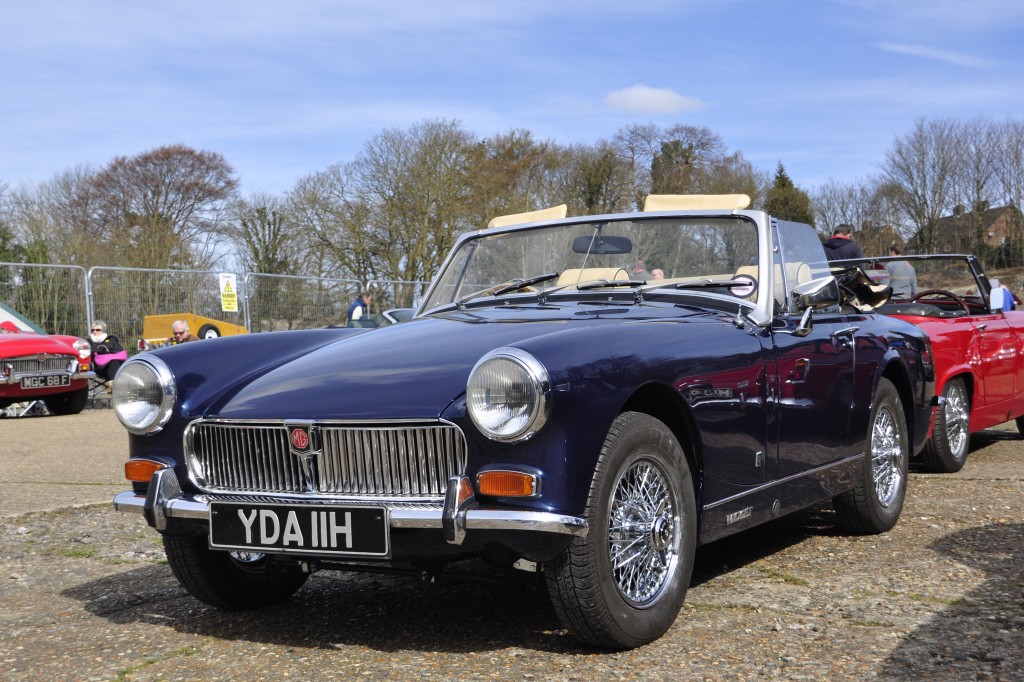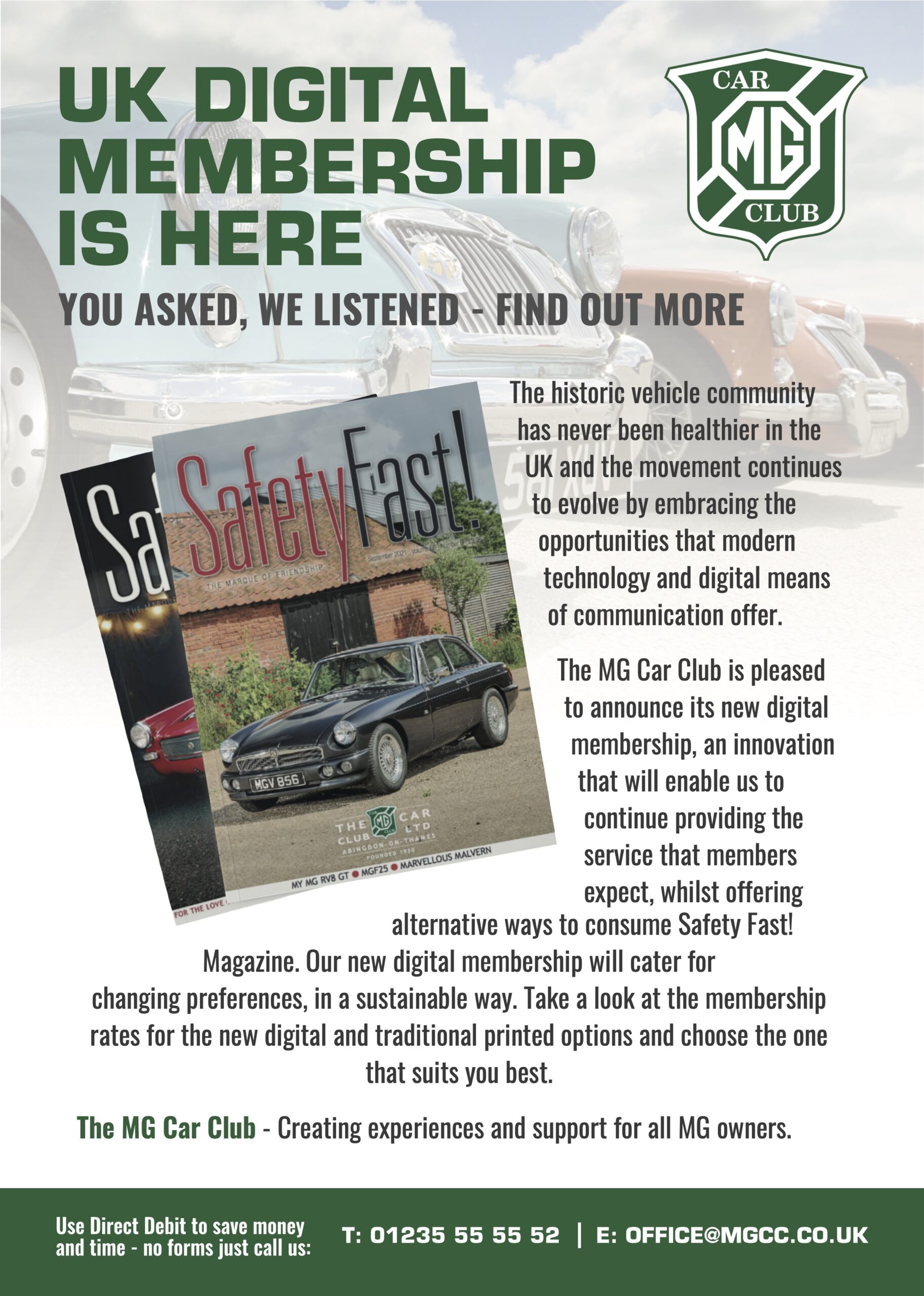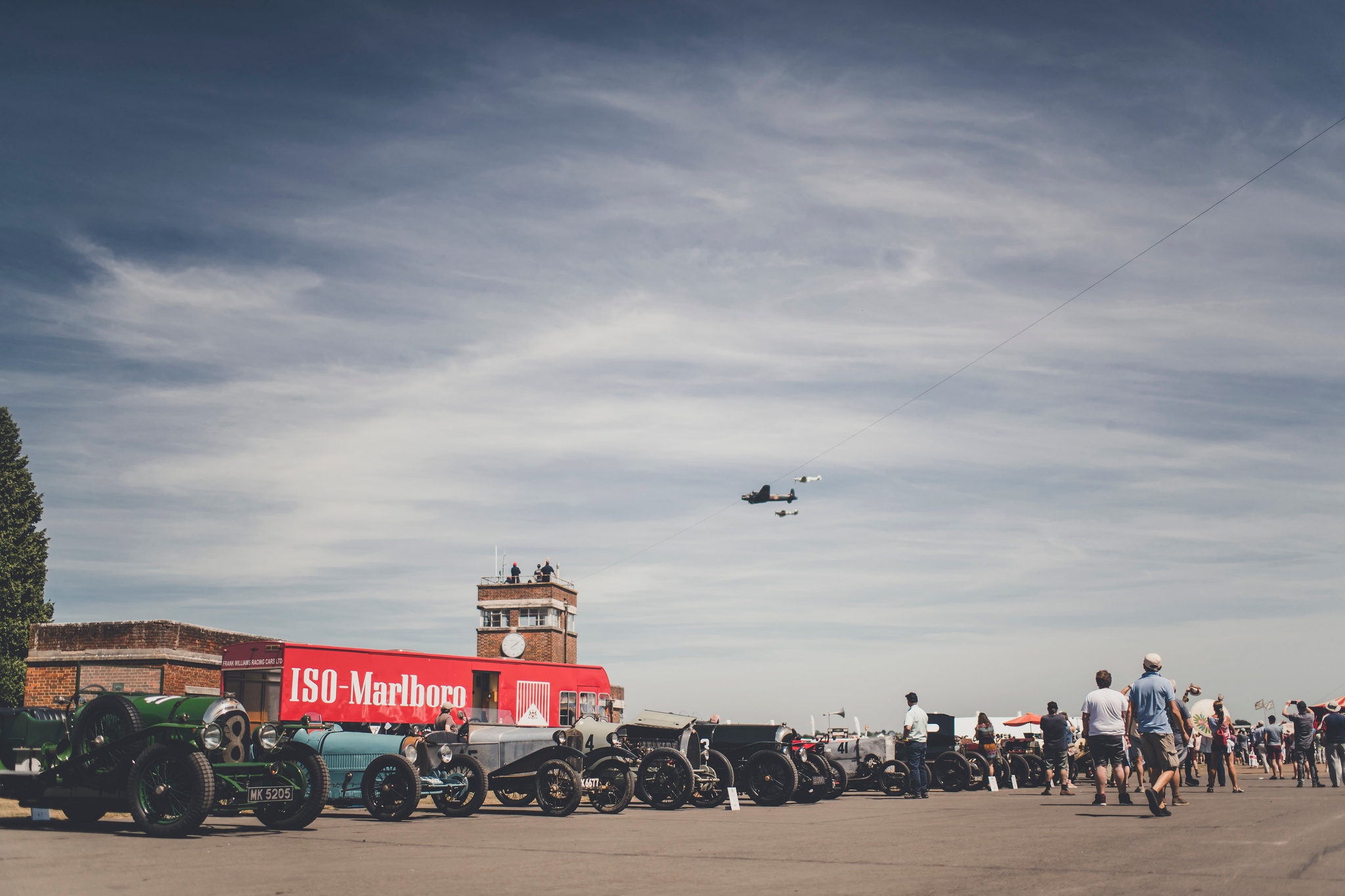MG Midget buying guide
Reproduction in whole or in part of any article published on this website is prohibited without written permission of The MG Car Club.
This week’s feature is an MG Midget buying guide originally published for Safety Fast! in April 2007.
Presumably if you’re reading this you are already the owner of an MG, or at least a member of the MGCC, so are familiar with MGs if not necessarily the Midget. Should that be the case and you’ve ever wondered what they are like, then this is for you.
It has been said, and justifiably, that the Sprite and Midget as produced by the MG Car Company from 1958 until 1979, provided motoring enthusiasts with by far the most amount of enjoyment, for by far the least amount of money. One of the most versatile sports cars ever, owners were within days of its announcement, competing successfully with them in all branches of motor sport, and have continued doing so ever since. Equally at home whether being used for racing, rallying, hillclimbing, sprinting, trialling, or auto-testing, these diminutive machines were and are truly competitive, and in talented hands always capable of some giant slaying results. A joy to drive, easy and inexpensive to buy and repair, these little machines represent the ultimate enthusiast’s all rounder. A true “sports car” in every sense of the word.
History
The name “Midget” was first used by MG in 1929 ascribed to the M Type, this being MG’s first baby sports car based on the then newly released Morris Minor. Rapid development of the overhead cam sports and racing cars through the early 1930s led to subsequent C ,D, J, P, Q, and R type Midgets, this being MG’s most exciting period. Then came the first of the T Type Midgets the TA in late 1936, culminating with the TF model of 1954. When the TF’s successor, the MGA, was being planned, it was considered the car had by now grown too large to be referred to as a Midget any longer, and so the name was dropped, not being revised until the new semi-monocoque car was launched in 1961.
The first ‘modern’ Midget was essentially a re-badged Austin Healey Sprite MkII which itself was a development from the the original 1958 MkI Sprite, more frequently known as the ‘Frogeye’. The MkI Midget, as announced in June 1961 and fitted with a 46.5bhp 948cc BMC “A” series engine was quite basic, with a very simple interior, sidescreens and stowaway hood. However it did just what its creators intended, and offered sporting motoring for minimum cost.
It differed from the Sprite by having a traditional MG style of grille and extra trim, a black instead of white steering wheel, and other small detail differences, the uncomplicated but attractive car bringing under one litre motoring back to MG enthusiasts for the first time since 1936. This didn’t last long though for in 1962 a more powerful version was introduced fitted with a 1098cc 56bhp version of the same engine, and in 1963 further improvements arrived in the form of front disc brakes and better interior trim.
At this point also the engine received some further refinement by the fitting of larger 2″ main bearings, this was in answer to the criticism of the engine being somewhat rough at higher revolutions. In all other respects the car remained as before, but big changes were to be revealed with the announcement of the MkII model in 1964.
This version incorporated a completely new and far more comfortable cockpit, with wind up windows and swivelling quarter-lights, better instrumentation, lockable doors and the option of wire wheels. The biggest change however was to the rear suspension, the quarter elliptic springs being replaced by softer half elliptic’s, resulting in a smoother ride. With the 1098cc engine now producing 59bhp due to a new three branch manifold, larger inlet valves and improved porting, the Midget was becoming sophisticated.
In 1966 yet more power was available by the fitting of the 1275cc 64bhp version of the “A” series engine, unfortunately though not the full 75bhp Cooper ‘S’ version. This model, the MkIII, also benefited from a superb new design of folding hood, and a larger fuel tank.
It was at this point however that all further mechanical development of the model sadly came to a halt, it remaining largely unaltered until 1974, although from the Leyland take-over in 1968 there were minor annual styling updates, mostly irrelevant, starting with the application of much matt black paint, a change in bumper design and rear light clusters, “mag” style Rostyle wheels fitted as standard, and a new pattern of seat material in late 1969.
In 1970 the Austin Healey Sprite model became just an Austin Sprite, which the following year after just 1022 had been made was dropped altogether. By this time however the two models had become identical in all but badge. Come 1972 and a slightly more notable alteration was made, when rounded rear wheelarches were introduced, a design cue not seen since the original Mark I Frogeye Sprite.
Also at this time Rostyle wheels, similar to those fitted to MGBs were fitted as standard with wires still being offered as an option, and all the interior switches were made to be of the rocker type in the aid of safety. In late 1974 however the car underwent its final and most significant change, for to keep the model in line with the ever increasing safety and emission rules being introduced in the US, heavy energy absorbing bumpers were fitted along with a 1498cc 65bhp engine from the Triumph Spitfire.
This engine was chosen as it had previously passed all US emission specification requirements, and it was unlikely the “A” series would without serious development. This Triumph engine was mated to a fully synchromesh gearbox taken from the Morris Marina range. Marginally more powerful, this final version could in standard form just reach 100mph, something none of the previous standard cars could achieve, although it took a while to get there.
Its appearance due to the bumpers was considerably altered, the Midget 1500 also featuring a return to the square design of rear wheel arch. In 1976 wire wheels were dropped from the option list. The car then continued in this guise with just slight annual cosmetic revisions until 1979 when production finally ceased on December 7th.
Usability
Probably the initial and greatest appeal of all Sprites and Midgets is their affordability and very low running costs, but pretty quickly new owners are captivated by the cars pin sharp handling and throttle response. They may not have power to spare but are willing, and at least as far as the “A” series cars are concerned, possess great tune-ability. Indeed these cars can be transformed into seriously quick machines, there being no shortage of tuning shops able to perform wonders.
The engines, even when tuned, remain relatively simple and strong, something which can be said of the car in general, although like all late fifties designs, they do suffer from corrosion. This, in common with so many cars of the time, being by far the most expensive problem to overcome.
Depending upon how bad the car has suffered, new shells are readily available and very good value, being a cost effective alternative to many hours of costly professional welding. Once the corrosion has been eradicated and thorough modern rust prevention has been carried out and maintained, the problem largely becomes history.
In use all the A series engined cars have a similarity in feel, compact with light and precise steering allowing easy controllable oversteer, a noisy first gear with no synchromesh, they simply cry out to be “driven”. Enormous fun and an absolute joy, if creature comforts are not high on your list of requirements, this is the car for any red blooded enthusiast.
The earlier MkI models with their quarter elliptic rear suspension are perhaps a tad sharper, but can catch the unwary out as there is less warning when things start getting near the edge. Some enthusiasts consider these the best handling of all the standard cars, even if the ride is a little firmer. The later 1500 models by contrast are much softer and do lose out on the Midgets strongest virtue, its handling, this mostly due to the large heavy bumpers combined with an increase in ride height. This of course can easily be overcome by lowering the suspension, and by what many owners have done, complete removal of those heavy bumpers.
Owning a Midget should cost very little, (my kind of car), any car manufactured before 1st of January 1973 being classed as an historic vehicle and therefore exempt from road tax, even later models made after this date only being charged the lowest rate of £110. Insurance likewise is relatively inexpensive, and with parts costing nothing in comparison to those of modern cars, these diminutive machines continue to give levels of enjoyment out of all proportion to their costs. When set up correctly they will start first time, warm up quickly and transport you anywhere enjoyably, returning at least 35mpg when driven in normal traffic. Bear in mind though they are between 28 to 45 years old, so won’t be quite as reliable as your modern car. They will, and do misbehave, with something often requiring attention at an inconvenient moment. Your ‘modern’ will undoubtedly be more reliable, but nothing like as much fun!
Modifying
With its easily tuneable BMC “A” series engine many tuning shops have offered all manner of performance enhancing modifications since the car was announced. Taurus, Speedwell and Abingdon Special Tuning all offered various levels of tuning from day one. Conversions of the engine swap variety were less common and only two were commercially available during the car’s production period. The first from Jack Brabham in 1963 deployed a 1216cc Coventry Climax engine, but was very expensive with few being made, then in 1972 C Conversions from Bedford produced the Atlantis Midget, using a Ford 1600cc GT Kent engine which although less expensive, still sold in relatively small numbers. Now we have companies like Frontline Costello offering all manner of things like five speed gearboxes, modern front end steering and suspension units with multi link rear ends, and engine swaps utilising the fuel injected “K” series engine. Modifications of this calibre move the car into a completely different category and is a subject in its own right. However it cant be stressed to strongly that a properly put together Sprite or Midget with a few period tweaks and a well prepared, balanced engine, is a pure joy to drive. Smooth and responsive the car becomes far more than just another form of transport. Great stuff!
Written by Dennis Wharf
Bodywork
Apart from the Mk1 Austin Healey Sprite, the body shape on the rest of the Midgets and Sprites looks the same. That’s as far as it goes as there are quite a few changes as production and models move through the years. However, there are many publications that go into great detail on all the minute changes, so I will just touch on a few, more important ones.
When looking at a Midget or Sprite attention should be paid to two main areas, corrosion and body damage / repairs. Staring at the front of the car we have quite a few things to look at. The bonnet is often an area that has had some attention at times. Due to it’s design and the way it is held open, the whole assembly flexes, this causes stress in the front of the bonnet and where you have stress, you get corrosion, this with the fact that the reinforcements of the panel at the front are a water trap means that this is a serious corrosion area.
Likewise, the lower front panel is vulnerable to corrosion plus the lower parts of the front wings. On a detail note here, it is worth researching the model year of your car as in 1968 / 69 there was a change in sidelight position, the later cars were fitted with the light unit slightly lower in the wing below the headlight, it is amazing how many cars are fitted with either the wrong wings or even odd wings!
Look also to the front of the wheel arch, if it is out of shape or appears to be pushed out slightly, this could indicate accident damage. Moving back, the rear of the front wings is also a mud trap where it meets the top of the sill, this area will rot away and also the footwell panel and sill with it, in extreme cases, the inner sill and front floor can be effected too.
The ‘A’ posts (door hinge panels) are very susceptible to rust, again a stressed area and a water trap. Pay particular attention here, as unprofessional repairs in the past have been common. The doors are often an area to aware of rusting; pay particular attention along the bottoms and the front lower corners.
Because of the nature of these little cars, they are a convertible and as such have often been used in wet conditions; ingress of water through open top motoring or just leaks can often lead to constantly wet carpets and thus over time, rusting floors and sills. Because the roof is NOT a supporting panel, the main strength of the shell is in the inner and outer sills and the gearbox tunnel.
It is very rare that the gearbox tunnel will be found to have any corrosion due to engine and gearbox oil leaks over the years protecting it, the sills on the other hand are a key area of corrosion. Badly fitted sills or a damaged car can quite often be noticed when opening and closing the doors. The gaps should be neat and equal and the door should open and close with ease and should certainly not nip.
The next areas of concern are the rear spring mountings. The early cars with the quarter elliptic are more vulnerable to corrosion as all the stress of the mounting is taken up in one area at each side of the car. Look for collapsed spring box mountings or an uneven ride height as an indication of trouble.
I have come across some frightening so-called ‘professional’ repairs in this area, most of which totally unsafe. The later cars with the semi elliptical springs are still a cause for concern but less so. Rear wings and inner arches are quite often rusted away, pay particular attention to the area behind the back of the rear wing where it is a double skin and comes up to meet the boot floor. Finally the boot floor itself. Areas of corrosion are common along the back of the boot floor where it meets the rear panel. Check for poor repairs here also.
Engine
In the most cases, Midgets and Sprites had the trusty BMC ‘A’ series engine fitted. It came in various sizes ranging from the early cars with 948cc and then 1098cc to the later models with the larger 1275cc unit. From there a major change was made and in 1975 the ‘A’ series engine was replaced with Triumph’s 1500cc unit.
In general the ‘A’ series engine was a trustworthy lump but as in all cases, neglect and over-enthusiasm often brought them to their knees earlier than desired. Look for low oil pressure particularly when the engine is fully warmed up, a worn engine will breath and you can smell burnt oil and fumes from under the bonnet as well as the exhaust. One engine that perhaps should be mentioned to take particular attention to is the early 1098cc version fitted to the Mk2 Midget and Mk3 Sprite. These engines shared the same crankshaft as the Austin A40 and Morris Minor 1000 and whilst seemingly OK in these models was not a strong unit in a Spridget. A more substantial crankshaft was fitted to the later 1098cc engines (with engine number prefix 10CC) and this shared the larger journal sizes of the Mini Cooper S range. The 1275cc engine was and still is a tuners delight, it is one of those engines that can be bored and stroked to nearly 1600cc and develop very healthy power. I will not go down the route of tuning here except to say, beware of tuned and tired engines. None of these engines have the life of today’s engines and one would expect to be rebuilding an engine at about 70 / 80,000 miles of normal use.
The later 1500 engine when in good fettle is a good unit and develops good power and torque, however it has a weakness. Its crankshaft journals are small and therefore their life is not long. I have heard of modifications to the lubrication system that drastically improves matters, but this is not an everyday modification.
Gearbox
The early cars were fitted with what is known as a ‘smoothcase’ gearbox, easily distinguishable buy its smooth appearance. These gearboxes are weak and spare parts are almost impossible to obtain now. However, those with early cars, do have less powerful engines and tend not to suffer too much trouble. The later gearbox is the ‘ribcase’ and again it can be easily identified by its appearance. A lot stronger gearbox and one that can be rebuilt. You may find some cars that have had various five speed gearboxes fitted, beware of this if you are after a ‘pure’ car, that is all I am going to say about five speed conversions.
Going back to the standard gearboxes, the problems to be aware of are noisy first and reverse gears. These gearboxes have a straight cut first and reverse and do have a ‘wine’ of their own, but this should not be mistaken for worn gears and bearings which is much more pronounced. Another thing to be aware of is worn synchromesh and gearbox internals. These gearboxes both ‘smoothcase’ and ‘ribcase’ are pleasant and easy to use, they have NO synchromesh on first gear so it is not advised to try to change down to first whilst on the move. The later gearbox fitted to the 1500cc models are a lot stronger but carry a weight penalty, they certainly are not a cause for major concern.
Axle, steering and suspension
I have grouped this together as I feel it is one area of the car that can be covered as a whole. The front suspension and steering is often the MOT testers favourite area on these cars and particular attention must be taken to inspect these items carefully. Wear and corrosion cause problems here and this is usually down to poor and irregular maintenance. There are between three and four greasing points on each front suspension and steering unit, these need lubrication very regularly and NOT with grease but with thick oil or a waterproof grease. The most common cause of MOT failure here is what is known as ‘Kingpin’ wear. In most cases that I have had to deal with over the years show little or no wear at all but excessive corrosion to the bottom of the ‘Kingpin’. Likewise the ‘Fulcrum’ Pin suffers in the same way. Other problems to be aware of may be track rod ends and play in the rack ends, but neither of these are major areas of concern. The front springs give little trouble but the rears start to sag after time and may require re-setting or replacement. The rear axle usually gives little or no trouble but listen for a noisy differential. Occasionally the rear hubs may leak oil into the rear brakes but this is usually due to lack of inspection and servicing and is easily sorted.
Brakes
The brakes on these little cars are very reliable when in good condition. Drum brakes all round on the early cars, and disc / drum combination on all models from the 1098cc engine onwards. Bad maintenance and worn parts can lead one into thinking that the brakes need up rating. The fronts require inspection now and again and the rears require regular adjustment to keep them performing well.
Exterior trim
The trim on the outside of the car is an aesthetic thing only. Sprites were fitted with no fancy strips on the bonnet or waistline, whereas the Midget was until 1969 when the trim vanished in stages of production. Later cars were fitted with a sill finisher and sill lettering. Careful inspection may reveal corrosion around the fittings for these trims.
Interior trim
The trim changed slightly almost from model to model, so if you are looking for an accurately detailed car, your research should be thorough. Many cars over the years have been messed around with and items swapped from model to model.
Maintenance
As with any car, servicing and routine maintenance is compulsory and certainly aids the reliability and enjoyment you will get from your trusty steed. The engine requires oil and filter to be renewed every 6000 miles or 12 months (whichever occurs first), plus air filters, plugs, points and condenser should also be renewed at the same time. Gear oil is usually fitted for life, but regular changing can’t do any harm at all, likewise the rear axle oil. Brakes as mentioned above require looking at frequently even if only to dust them out and adjust them, however more importantly, remove the front brake pads and push back the calliper pistons every now and then, just to be sure that everything is free and working.
Looking after the bodywork is easy, regular washing under the car and cleaning out trapped mud and deposits will help prevent corrosion and touching up stone chips will do likewise. Remember cellulose paint and chrome are both porous so regular waxing will also help these areas. Finally an under body wax such as Waxoil or Dinatrol is also a good deterrent for corrosion.
Points of reference taken from “Original Sprite & Midget” by Terry Horler
Written by Mark T Boldry
A new owner’s perspective
Growing up I was surrounded by cars, MGs in particular. Summers spent breathing in the intoxicating Castrol ‘R’ fumes at numerous race circuits, ‘helping’ dad at a young age as he serviced the many MGs he has owned, navigating the British countryside on several Speckled Hen runs and the like. I knew I would own an MG of my own one day and I was always pretty sure which one it would be.
I always liked the Midgets best. They just looked like so much fun and the drivers always seemed to have the biggest grins on their faces. I had watched them race, seen them hill climb, knew my dad had rallied one in the past and after seeing my parents pack enough gear for a two week-long camping trip to Switzerland into theirs, wondered if there was anything that couldn’t be done in a Midget.
Then, when I was about fourteen, I visited with my dad the workshops of Peter Wood, well known in MG circles, especially for his expertise on MGA Twin Cams, but also very well known for his work with old aircraft too. He was at the time, among other things, about half way through the re-building of a Spitfire (a Supermarine Spitfire not a Triumph), and not just any old Spitfire either, but the only known surviving naval version called a Seafire.
Peter very kindly allowed me to help out on Saturday mornings. Well when I say ‘help’, I really mean take stuff apart and watch and listen while things were built, but it meant that I learnt how engines and gearboxes worked and I gained some useful mechanical skills.
So every Saturday morning and much of my school holidays, until I went to university, was spent at Peter’s working on the Seafire but many MGs too. I found it all quite fascinating, and Peter very patient, putting up with my mistakes and endless questions. I was also very lucky as I was taken a few times to the VIP enclosures at some air shows where Spitfires would by flying, and had the opportunity to meet some of the pilots.
Six months or so before I left Peter’s he decided to re-build a 1974 round arch Midget on a new Heritage shell. This had been in the yard rusting away for many years, but Peter had all the documentation for it and just about every part required to completely re-build the car from scratch, from his stores of ‘new old stock’.
Furthermore, under the bench was a freshly built, and blueprinted,1275cc “A” series engine just crying out for a suitable car. I helped Peter start with the dismantling of PWV 765M, which had originally been finished in Glacier white with Autumn Leaf interior and had also been fitted with wire wheels, an unusual and very attractive combination. We started by removing all the large mechanical parts, for inspection, which due to its low mileage were in good order, especially the rear axle and gearbox.
I saw very little of the remaining work that went into this car as by now I was away furthering my education, but whenever I came home and made a visit to Peter, I noticed a little more had been done and so over time witnessed the re-birth of the Midget.
It was ten years later in the summer of 2005 when I felt I had been MG-less for long enough and should put matters right by getting my own car. At the annual Silverstone International I looked at all the Midgets, especially those for sale, though none of them impressed me too much (lots of shiny paint, but not too much floor in one case!).
Being impatient I was a bit disappointed; however I had a drive in dad’s Midget to restore my enthusiasm and the search resumed. A few weeks later when he was visiting Peter for some reason or another, my dad mentioned we were looking for a good Midget when Peter said, “well why doesn’t she buy mine?”
PWV 765M had simply been sitting in one of Peter’s workshops gathering dust (lots of dust), unused, even un-MOT’d for the past ten years, just waiting for an owner. It would cost more than my intended budget, but what a chance. In fact the only chance I would probably ever have of buying the nearest thing to a brand new 1974 MG Midget!
It was by now about mid September and so it made sense to put things off until the following spring, this would give me more time to save up, and Peter time to get the car up and running once again. And so it was in April 2006 when dad collected PWV and took it home for some serious running-in, between himself and Peter all the little problems were eventually put right, and after a good polish the car looked terrific.
Dad drove the car down to me on a perfect summer’s day in June and I went for my first drive, taking just a short trip around the local lanes up on the South Downs near Stockbridge. It was simply perfect; I’ll remember it for the rest of my life. The steering, pin sharp, seemed a little heavy compared to my modern car, and the gear change very precise, but pretty quickly everything fell into place.
I’ve really only had about four month’s driving experience in my Midget but it has all been tremendous fun.
Compared to any modern car everything on my Midget has character. The way the doors need closing or the windows winding, the noise from first gear, the way it takes corners, I could go on and on, its just what I always thought it would be – and then some. I had already come to accept that there would be the odd problem, mainly because the car had stood un-used for so long, and there will always be jobs to keep me busy I am sure, as with any old car.
But to me, that is all part of the appeal and I hope that by doing a lot of the work myself, I will get to know my Midget well enough to know if anything is going wrong before it does, and be able to enjoy the car for what it is – a fantastic little sports car.
Written by Katie Wharf

 MG Car Club
MG Car Club